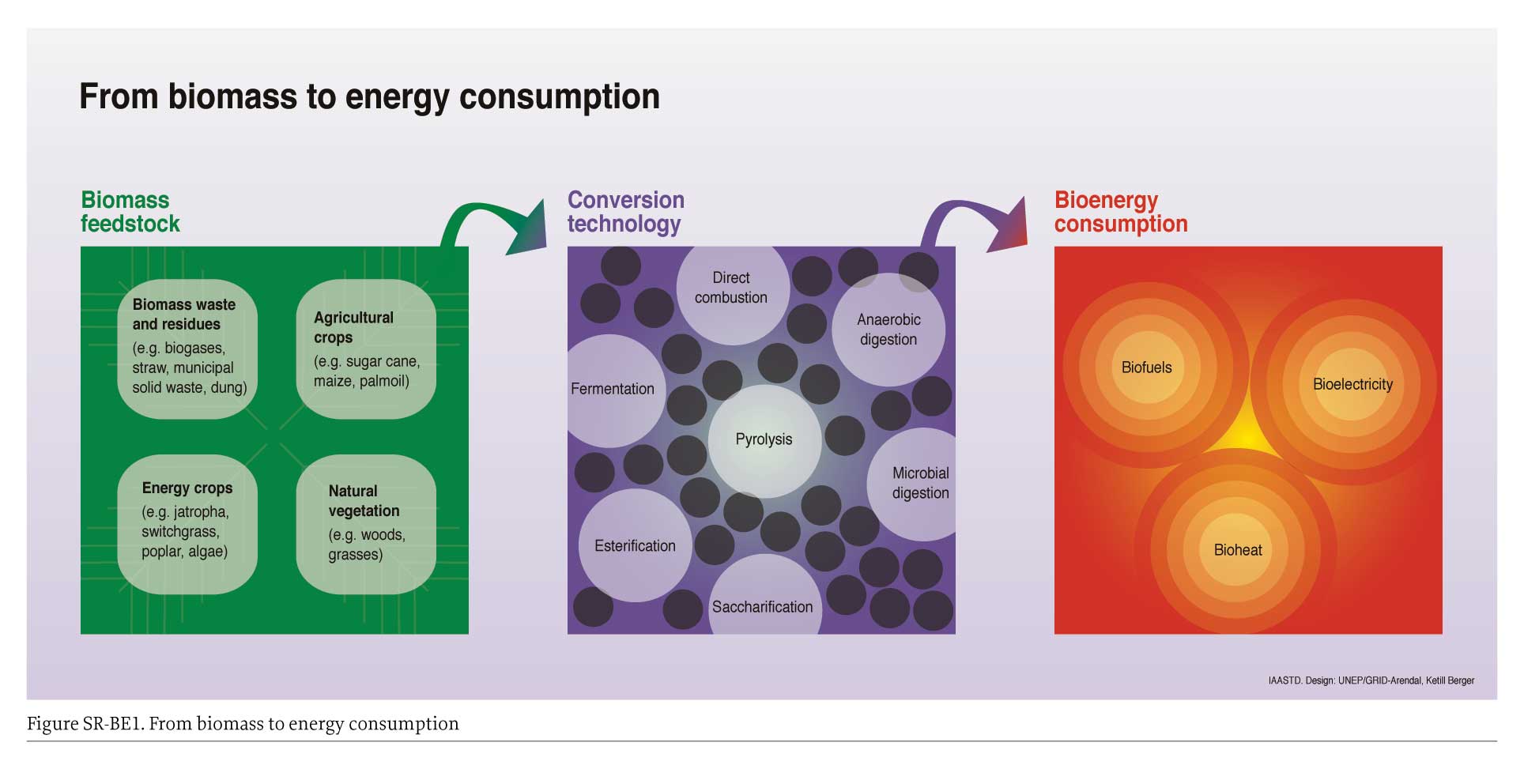
| Previous | Return to table of contents | Search Reports | Next |
| « Back to weltagrarbericht.de | ||
36 | IAASTD Synthesis Report

Figure SR-BE1. From biomass to energy consumption.
and other grains, sugar cane, soybeans, cassava, rapeseed, and oil palm, production of bioethanol and biodiesel has been growing fast in recent years, albeit from a low base— together they contributed about 1 % of global transport fuels in 2005. Fast growth rates are mainly due to biofuel support policies that have been developed in many countries around the world in the hope of furthering rural job creation and economic development, mitigating climate change and improving energy security [ESAP Chapter 4; NAE Chapter 2; SSA Chapter 2]. |
|
measurement methodologies and the strong effect of specific local circumstances, such as type of feedstock, original use of agricultural land, mechanization of production and fertilizer use. Generally, assuming feedstocks are produced on agricultural land and do not induce deforestation, crops produced with few external inputs (fertilizers, pesticides, etc.), such as rain fed sugarcane in Brazil, perform significantly better than high-input crops such as maize in North America. Consequently, whether biofuels are a viable option for climate change mitigation depends on the emissions reductions that can realistically be achieved as well as relative costs compared to other mitigation alternatives. Apart from GHG considerations, considerable environmental costs may be associated with large increases in biofuels production. For example, it is feared that the increased demand for limited agricultural production factors (e.g., land and water) will lead to a conversion of pristine biodiverse ecosystems to agricultural land (e.g., deforestation) and depletion of water resources—instances of this happening are already apparent in different regions, e.g., draining of peat land in Indonesia and clearing of the Cerrado in Brazil [Global Chapters 4, 6; NAE Chapter 4]. |
| Previous | Return to table of contents | Search Reports | Next |
| « Back to weltagrarbericht.de | ||